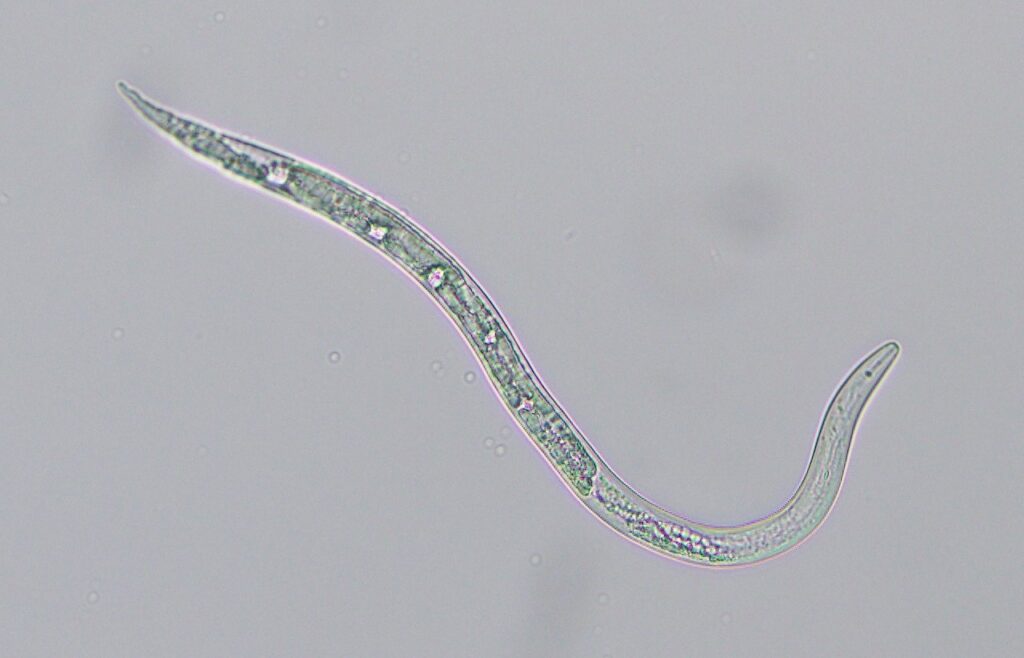What is a Root-Knot Nematode?
Nematodes, also known as roundworms, are microscopic, unsegmented worms within the phylum Nematoda. Nematodes are widely considered the most abundant animal on the planet, given that they inhabit almost every single environment including the ocean, bodies of fresh water, soil, plants, animals, and even humans!
Plant-pathologists are interested in the plant-parasitic nematodes, particularly root-knot nematodes (RKN) within the genus Meloidogyne. The Meloidogyne genus comprises multiple species of root-knot nematode including Meloidogyne enterolobii (guava root-knot nematode), Meloidogyne incognita (southern root-knot nematode), Meloidogyne hapla (northern root-knot nematode), Meloidogyne arenaria (peanut root-knot nematode), and Meloidogyne javanica (Javanese root-knot nematode). M. enterolobii and M. incognita are the main species that cause the most serious damage to sweetpotato.

Credit: Adrienne Gorny
Root-Knot Nematode Biology
One of the key identifying characteristics of the plant parasitic root-knot nematode is the mouthpart that they possess, called a stylet (shown in photo above). A single female nematode can produce over 1,000 eggs and these eggs can last at least one year in the soil. Transmission of root-knot nematodes can occur from the movement of infected soil and through water.
Learn more about root-knot nematode biology, including life cycle, infection, and transmission here.
Symptoms and Identification of Root-Knot Nematodes
Learn more about the symptoms of root-knot nematode infection and how to identify root-knot nematodes here.
Root-Knot Nematode Management
Learn more about strategies for root-knot strategies for root-knot nematode management here.
Meloidogyne enterolobii
Learn more species-specific information on Meloidogyne enterolobii here.
Meloidogyne incognita
Learn more species-specific information on Meloidogyne incognita here.